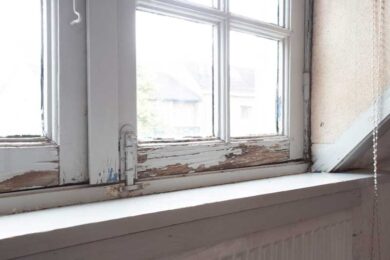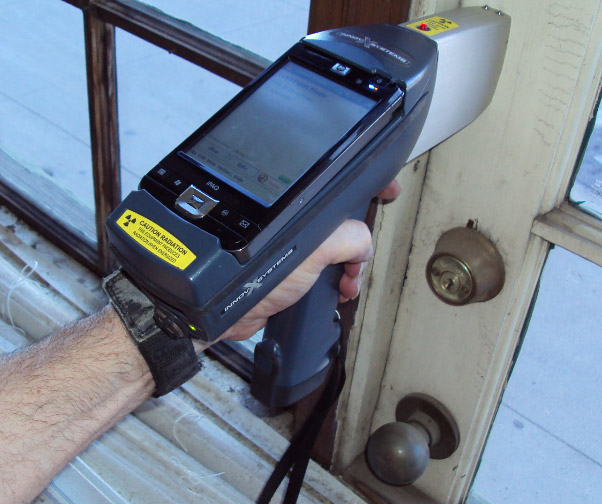Lead Paint Removal Service-- NYC's Trusted Solutions for Lead Safety
Wiki Article
Vital Tools and Methods for Efficient Lead Infraction Clean-up
Attending to lead violations efficiently requires a detailed approach that blends the right tools with strategic methodologies. The primary step includes equipping employees with Personal Protective Tools (PPE) to protect their wellness. Concurrently, using specialized cleanup tools, such as HEPA vacuums and lead-specific cleansing representatives, is imperative for extensive pollutant elimination. Effective control techniques, including plastic bed linen and adverse atmospheric pressure systems, are vital to avoid the spread of hazardous materials. Additionally, secure disposal methods and strict adherence to regulatory standards guarantee liable handling of hazardous waste. What are the nuanced approaches that genuinely make a difference?Individual Protective Devices
Personal safety equipment (PPE) is an essential part in the effective monitoring of lead contamination cleanup. The necessary PPE for lead cleaning includes respirators, protective garments, gloves, and eye protection.Respirators, specifically those furnished with HEPA filters, are crucial for filtering air-borne lead bits, avoiding inhalation. Correct fit and seal checks are important to guarantee their performance. Safety clothes, consisting of coveralls and disposable suits, avoids lead dirt from sticking to workers' garments, decreasing the risk of secondary contamination. Handwear covers, typically made from nitrile or latex, protect the skin from direct call with lead, while safety and security goggles or full-face guards secure the eyes from dust and particles.
Moreover, extensive training on the appropriate usage and maintenance of PPE is necessary. Employees need to be educated on donning and doffing treatments to avoid contamination. Normal inspections and substitutes of PPE parts are needed to keep their safety capabilities, guaranteeing a secure and compliant cleaning procedure.
Specialized Clean-up Equipment

One more necessary device is the wet/dry vacuum, which can properly cleanse up both dirt and liquid impurities. These vacuums commonly feature HEPA filters to provide an additional layer of safety and security. Damp wipes or tack cloths are likewise vital for surface area cleaning; they are specifically developed to capture and hold lead fragments, reducing the risk of spreading contamination.
For more stubborn deposits, specialized lead-removal cleaning representatives are called for. These agents are formulated to break down lead fragments, making them much easier to get rid of. Scrub brushes with tough bristles can aid in this procedure, specifically on rough surface areas where lead dust tends to stick extra strongly.
Furthermore, encapsulants are made use of to seal lead-contaminated surface areas, avoiding the launch of lead dust. These specialized paints and layers are made to stick to numerous substrates, offering a lasting service for lead control.
Effective Control Methods
Efficient containment approaches are vital in alleviating the spread of lead contamination throughout cleaning tasks. Applying robust containment techniques ensures that lead bits do not move to unaffected locations, consequently protecting both workers and the atmosphere (DOH & HPD Lead Violation Removal NYC).
To boost containment, encapsulants can be applied to surfaces that are not being gotten rid of or interrupted. These specialized coatings bind lead dirt, decreasing its schedule for resuspension. In addition, all workers have to put on appropriate Individual Protective Equipment (PPE), including respirators and non reusable fits, to avoid contamination spread.
Safe Disposal Practices
Making sure secure disposal methods is an important component in the administration of lead contamination clean-up. Correct disposal minimizes the danger of lead re-entering the setting and jeopardizing public wellness. The initial step is to identify and set apart lead-contaminated waste from various other materials. Protected containment utilizing heavy-duty, watertight containers is important to stop spillage during transport.Delivering lead waste needs adherence to rigorous guidelines. Making use of certified hazardous waste carriers makes sure that the materials are handled sensibly. Paperwork, including materializes describing the kind and quantity of waste, should accompany deliveries to track the waste from the website of origin to its final disposal location.
Designated hazardous waste disposal centers are geared up to deal with lead-contaminated products securely. These centers Lead Paint Removal Service often employ sophisticated techniques such as stabilization, solidification, or chemical therapy to counteract the lead before disposal. Landfilling in specialized, lined areas that stop leachate from polluting groundwater is a typical method for final disposal.
Regular training for personnel entailed in lead garbage disposal is important to keep safety standards and protect against unintended direct exposure. By adhering to these practices, organizations can considerably decrease the environmental and health and wellness impacts connected with lead contamination.
Regulatory Conformity Tips

Abiding by regulatory conformity is extremely important in the effective implementation of lead contamination cleanup. Recognizing and adhering to government, state, and regional policies makes sure not just the safety and health and wellness of people but likewise the lawful and economic health of the clean-up organization. The Epa (EPA) establishes stringent requirements, such as the Lead Renovation, Repair Work, and Painting (RRP) Rule, which mandates correct qualification and training for service providers taking care of lead-based activities.
Compliance begins with a comprehensive evaluation of applicable regulations and guidelines. Organizations has to remain updated on any kind of legal adjustments, which can be helped with via regular training sessions and registering for industry updates. Documents is one more essential compliance element; preserving comprehensive records of all tasks, consisting of assessment records, employee training logs, and disposal manifests, is important.
Furthermore, involving with certified lead assessors or risk assessors ensures that lead threats are correctly identified and reduced. Companies need to apply making use of Individual Protective Devices (PPE) and make certain that safety and security procedures are strictly adhered to. Last but not least, transparent communication with stakeholders, consisting of workers, clients, and regulative bodies, will certainly foster a culture of compliance and accountability, ultimately adding to a much safer and much more reliable lead cleanup process.
Verdict
Reliable lead infraction cleaning necessitates the combination of specialized devices and calculated techniques to ensure safety and security and efficacy. Utilizing HEPA vacuum cleaners, specialized cleaning agents, and effective control approaches such as plastic bed linen and unfavorable atmospheric pressure systems is essential. Individual safety equipment (PPE) safeguards workers from exposure, while safe disposal methods and strict adherence to governing conformity are vital for sensibly handling contaminated materials. Jointly, these actions considerably reduce health and wellness risks and add to a cleaner environment.Report this wiki page